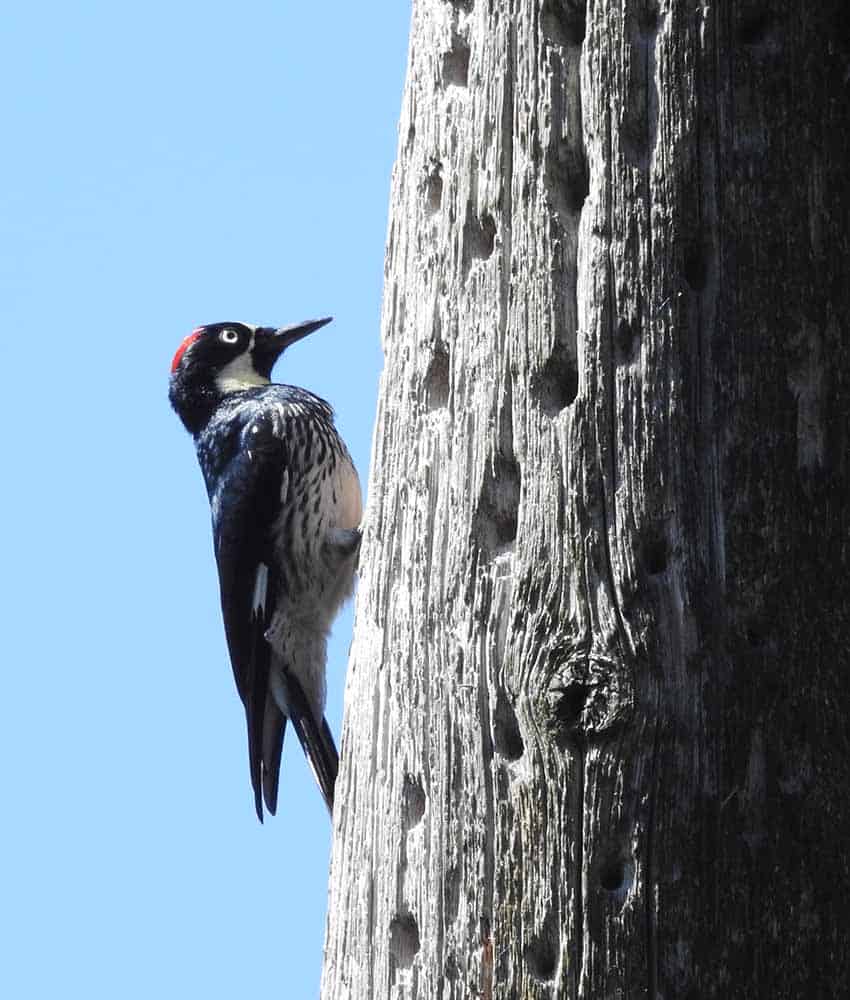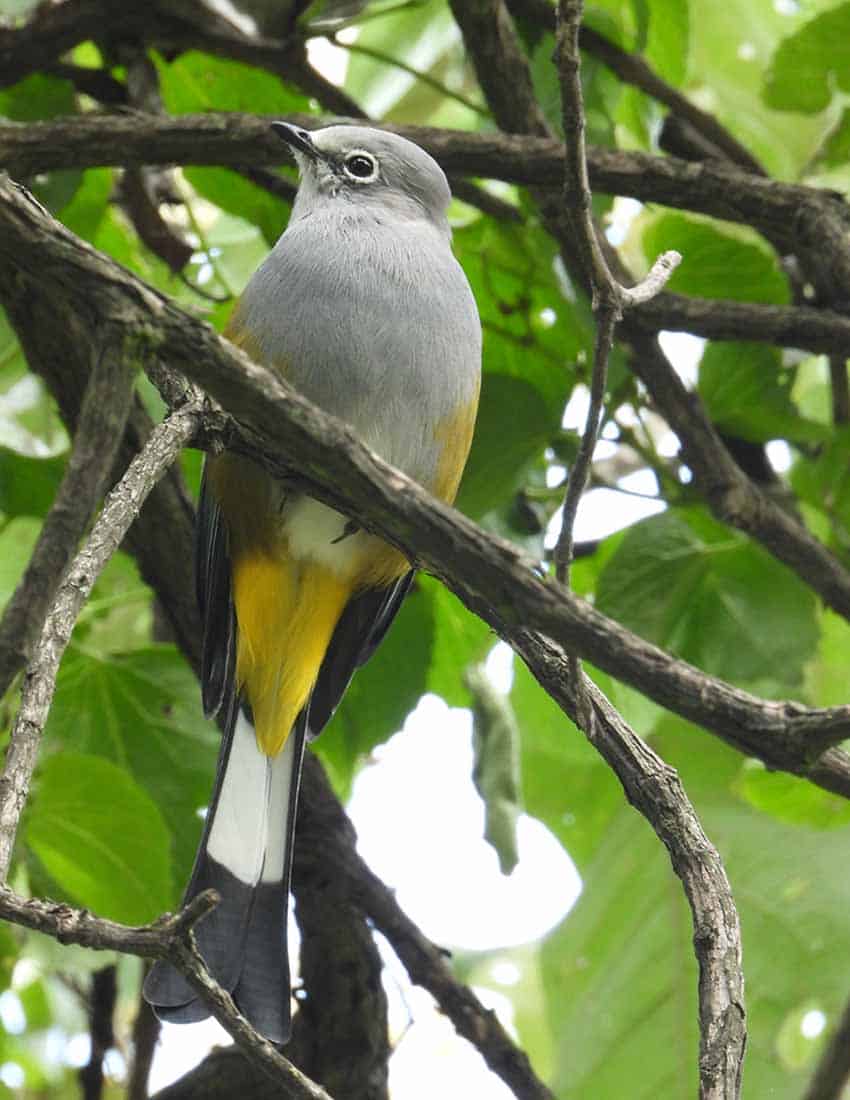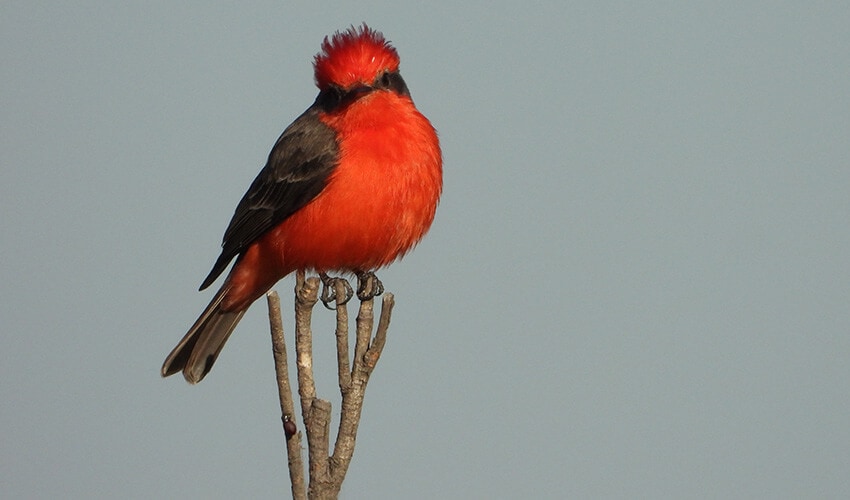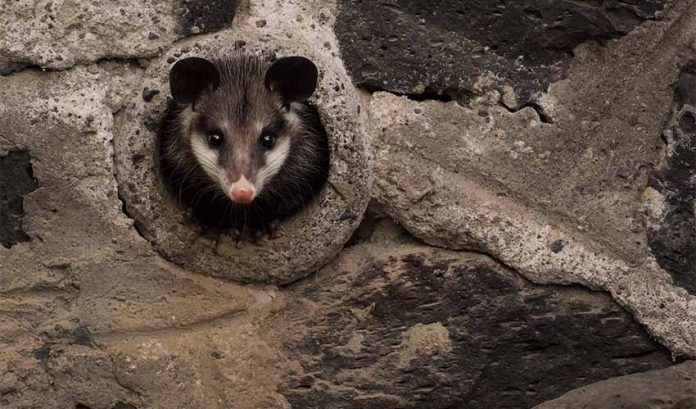If you don’t want to notice birds everywhere you go, then don’t go on an Ihuitl birding tour.
Weeks after my trip with them, I still obsessively scan trees next to my rooftop and have my Merlin app ready to record and identify birds in my neighborhood. I see them when I am running in the park; I hear them when I sit near the air shaft of my building.
I’ve become a little bird crazy.
At the crack of dawn on a recent spring morning, Rafael Calderón and Isain Contreras, two of Ihuitl’s founders, took my uncle and me on a birding tour to see some of city’s spectacular winged species. As we drove bleary-eyed to Mexico City’s Parque Las Maravillas at 6 a.m., I doubted just how amazing birding in the city could be.

An animal lover from childhood, Calderón stumbled into birdwatching when, as a biology student, he took an inspiring class taught by Alejandro Meléndez, an ornithology professor and researcher at Mexico’s National Autonomous University (UNAM). It didn’t take long for birds to become a full-blown passion: Calderón joined up with other birders in his free time and began working for bird conservation projects around the country.
“There is a famous saying that goes, ‘You can only conserve what you love, and you can’t love something you don’t know,’” Calderón tells me. Many Mexico City residents don’t even understand what birding is, much less that they can do it right where they live, he says.
“They think that there’s not much to see in Mexico City, that they will have to travel long distances to see a lot of birds, when in reality you can find distinct species right in your own backyard or in nearby parks.”
Mexico City is full of wildlife. At the entrance to Parque Las Maravillas, for example, there’s an expanse of shrubland that’s home to the Sierra Madre sparrow. Mexico City hosts 80% of this bird’s population worldwide.
Calderón explains how important it is that this special environment — high-altitude grasslands found only along the Mexico volcanic belt — is preserved to ensure this and other species’ survival.
“Here in Mexico City, we have the great fortune of having all kinds of different of habitats right at our fingertips – the wetlands of Xochimilco and Tlahuac, the brushlands of Pedregal de San Ángel, oak forests like the Bosque de Tlalpan, pine forests in Ajusco and the meadows of Milpa Alta,” Calderón says. Some of these birds only live in this tiny part of the globe.
There are 2,254 species living in CDMX, according to the city’s Environment Ministry (SEDEMA). Conservation photographer Tamara Blázquez humbly admits she’s only photographed about 200 or so off that list.

A born and raised chilango, Blázquez found photography young but discovered as an adult that she had a heart for conservation as well. It all started 5 ½ years ago when she found a poisoned possum in her neighborhood.
“It was because of ignorance, because people don’t really know anything about all the species, all the animals that coexist here in the city with us,” she explained. Some people thought they were rats,” she says. “But now the people that I have had contact with, especially my neighbors, they now know that [possums] are marsupials, not even rodents, and that they are very important for the ecosystem.”
Blázquez began to dedicate her time to photographing the wild creatures of the city, as well as providing easy access to conservation science to regular folks through workshops, exhibits, and kids’ classes, where she explains that these creatures are necessary, endangered (by us), and — maybe most importantly for some hard-to-convert conservationists — beautiful.
Mexico City’s wealth of wildlife includes possums, barn owls, pelicans, ospreys, rattlesnakes and even bobcats, at the city’s edge. One of the coolest animals Blázquez photographed has been the coyotes in the more rural parts of Mexico City. During the pandemic, they started moving even closer to the human population. As humans encroach further into the city’s wild spaces, there’s bound to be more contact between us and the capital’s wildlife.

Not all of the interesting mammals are in the outer reaches of the city limits. During the pandemic, Blázquez photographed a cacomixtle, a native nocturnal animal somewhere between a cat and a raccoon, with a camera trap right in her backyard.
“I started observing him from my kitchen window every single night. He was very punctual and came to my yard every night right at 8 p.m. and would leave at 9 or 9:30 p.m. After a few months, I started going out every night at 8 p.m., hiding nearby; after two months, I was able to catch him on film,” she says.
After she took that first shot, she wanted to get another, so Blázquez left the camera for one more night, but that night, when the camera was supposed to shoot, she didn’t hear anything. “So I left my hiding place to see what was happening, and I didn’t see him,” she says. “And when I turned to my right, there he was, standing right beside me, like, ‘Oh hey human, there you are. I know what you are doing.’”
She laughs. “I was never able to take another shot of him, he was so smart; I wasn’t able to trick him anymore.”

Blázquez hopes that with her project Mexico City’s Wildlife she can start training people to see the nature around them, even in a place that we think of as a concrete jungle. “I also used to think that [the city] was barren, that you couldn’t find anything else but humans here,” she says. “But knowing that all the other animals make their homes here, it’s hopeful and inspiring; it makes me want to work harder for them, to conserve everything in the city, even if it’s a small local park that’s an ecosystem, and we have to fight hard for that.”
Both Blázquez and Calderón agree that the most important step we can take as humans is to start observing and appreciating our natural fauna, as well as understanding our impact on their environment and survival.
So if you are in Mexico City and want to help conserve some of the many glorious species that the city contains, Calderón recommends joining local birding groups or supporting the work of Grupo Monitoreo Biológico de Milpa Alta, a conservation group working to safeguard species endemic to the Milpa Alta.
Another important promoter of urban bird watching is the Programa de Aves Urbanas run by the National Biodiversity Commission (Conabio). Blázquez recommends the work of Coordinación de Pueblos y Barrios Originarios de Xochimilco, which works to protect and restore the city’s southern chinampas; Pronatura Mexico, which works across the country; and Xochimilco Vivo, a conservation group working to protect the lake area of the city.
Lydia Carey is a freelance writer and translator based out of Mexico City. She has been published widely both online and in print, writing about Mexico for over a decade. She lives a double life as a local tour guide and is the author of Mexico City Streets: La Roma. Follow her urban adventures on Instagram and see more of her work at www.mexicocitystreets.com.
